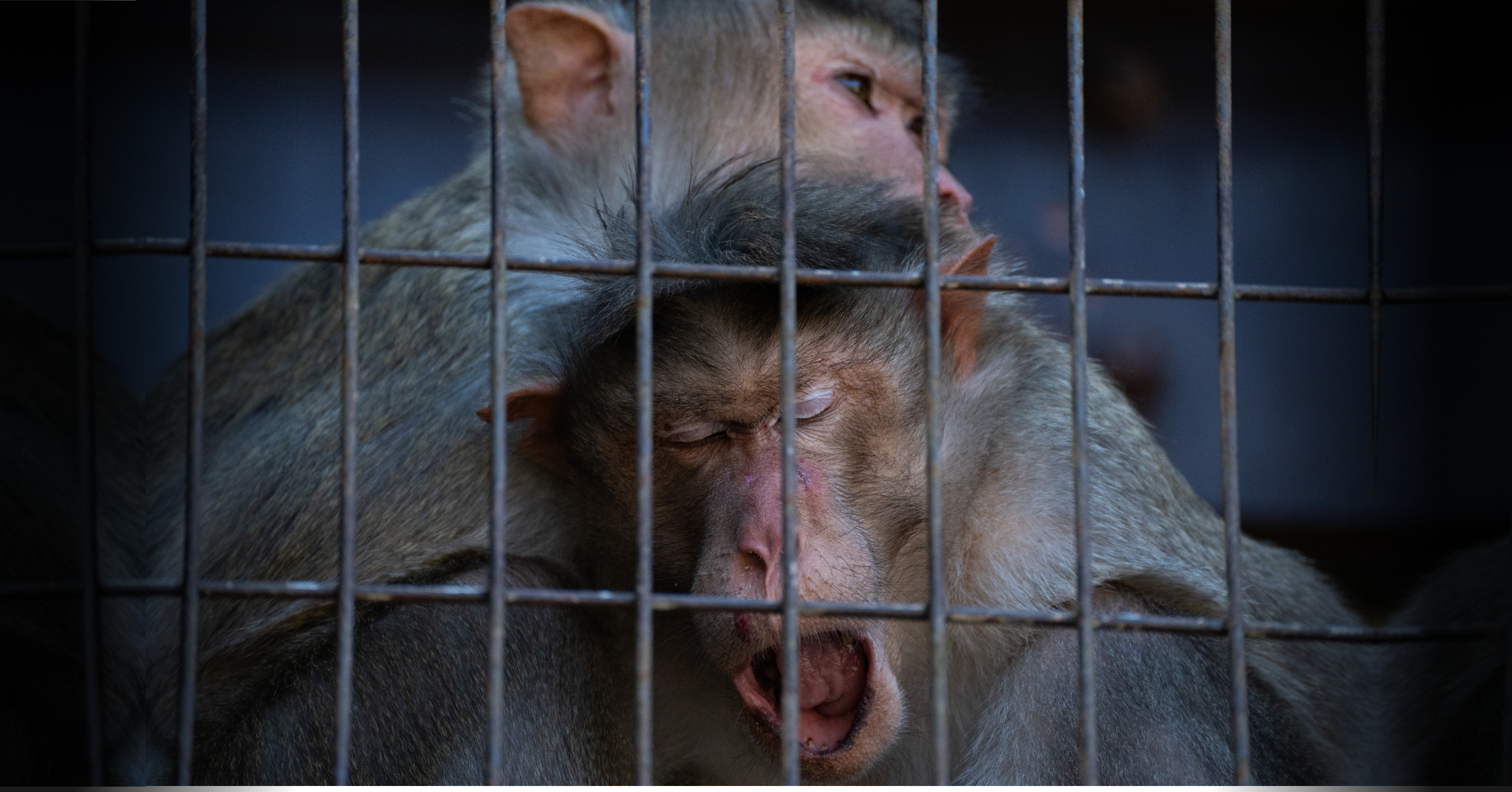
On May 4, 2023, the National Academies of Science, Engineering and Medicine (“NASEM”) published a 250-page report analyzing the use of nonhuman primates in experiments funded by the National Institutes of Health (“NIH”) and concluding that the U.S. should increase both nonhuman primate breeding and experimentation.
Many have rightly voiced disappointment with the report’s conclusions, but no one seems to be talking about how we should never have expected anything else (or, really, dared to hope for anything better).
NASEM is an animal research industry front group.
NASEM was established by a 1863 Congressional charter to advise on national issues of science, engineering, and medicine. And, though, it has endeavored to paint itself as a private, nonprofit entity that provides “independent” and “objective” advice, NASEM’s primary operating arm (the National Resource Council) exists to promote scientific research; its members are elected “for outstanding contributions to research”; and it’s funded primarily by federal agencies (through grants and contracts) and, to smaller degrees, by state agencies, foundations, and other private enterprises.
The report itself was sponsored by the NIH and relied on input from “government agencies, National Primate Research Centers, academic institutions, and more than 300 scientists who use nonhuman primates” – all factions with vested professional and financial interests in nonhuman primate research.
From inception, NASEM’s allegiance to the animal research industry has been overt. Indeed, one of its constituent entities, the National Association of Science (“NAS”), has joined with the American Medical Association as far back as the nineteenth century to oppose the animal welfare efforts of the American Anti-Vivisection Society and to oppose legislation seeking to restrict animal experimentation. And, the NAS remains staunchly pro-vivisection.
Much of the NAS’s work to advance the interests of the animal research industry is pursued or teed up by its subdivision the Institute for Laboratory Animal Research (“ILAR”), which has enjoyed a membership comprised of the “Who’s Who” of animal research and which serves as “the liaison between the laboratory animal science community and [the NAS]”. Moreover, in all of its efforts – which have notably included drafting reports that have stimulated the growth of the “laboratory animal science discipline” and have been incorporated into federal policy; consulting formally and informally with the USDA regarding animal experimentation regulations; and drafting the NIH’s animal care regulations – ILAR has received “inestimable” “intellectual and financial support” from the NIH . . . which is to say that the world’s largest funder of animal research has been pulling ILAR’s strings from the beginning and that ILAR (and, in turn, the NAS and NASEM) is beholden to its interests. Indeed,
ILAR does not even pretend otherwise, unequivocally acknowledging that its future will “be directed” by the needs and support of its “government and foundation sponsors”.
NAS’s (including ILAR’s) role, then, is perhaps most aptly conceived of as a veiled attempt to hide the inappropriate collusion between non-governmental animal researchers and the federal government: rather than having the federal government cooperate directly with non-governmental animal researchers in aggressively pursuing a pro-vivisection agenda, the federal government created a “separate” body – the NAS (and ILAR) – to stand between them. Of course, animal researchers compose the NAS, and the NIH both funds and puppets the NAS . . . but you have to look twice to see this.
NASEM’s report complements its long-standing efforts to entrench primate experimentation in the US.
In many ways, the report released by NASEM earlier this week harkens back to ILAR’s early days: ILAR has played a pivotal role in the perpetuation and expansion of nonhuman primate experimentation dating back to the 1950s-1960s. In fact, ILAR is credited with laying the foundation for the U.S.’s seven National Primate Research Centers, federally-funded, nonhuman primate breeding and research facilities that represent the first biomedical research centers established by the NIH.
These Centers have undertaken domestic breeding programs since at least 1975 and continue to play a “national leadership role” in the utilization of nonhuman primates for experimentation. They have long sought more funding, and NASEM has now reinforced this want: though the US government invested an extra $30 million in monkey breeding at the Centers in 2021, report contributors claim that the Centers will need “hundreds of millions” more dollars to breed enough monkeys to meet researcher demand. And, they are hoping that the NASEM report will speed up their next, non-routine infusion of government capital.
NASEM claims that primate research is critical to biomedical research, but the science itself makes clear that the use of nonhuman primates as models for humans retards biomedical progress.
With so much money in play, and the interests of primate researchers and their funders controlling, it’s not surprising that the report gave short shrift to the development of human-relevant, non-animal methodologies. These would not be immediately profitable to NASEM’s stakeholders.
But, they would be immediately beneficial to the welfare of both humans and nonhumans.
We need to educate ourselves and demand better for all.
We are working toward a day when the interests of the living will outweigh the financial interests of industry, and the first step is for the collective “us” to understand the forces at play:
NASEM’s report – far from providing unbiased advice – loudly projects the interests of those who make a living off of animal research and who are holding NASEM’s megaphone. Nothing more.